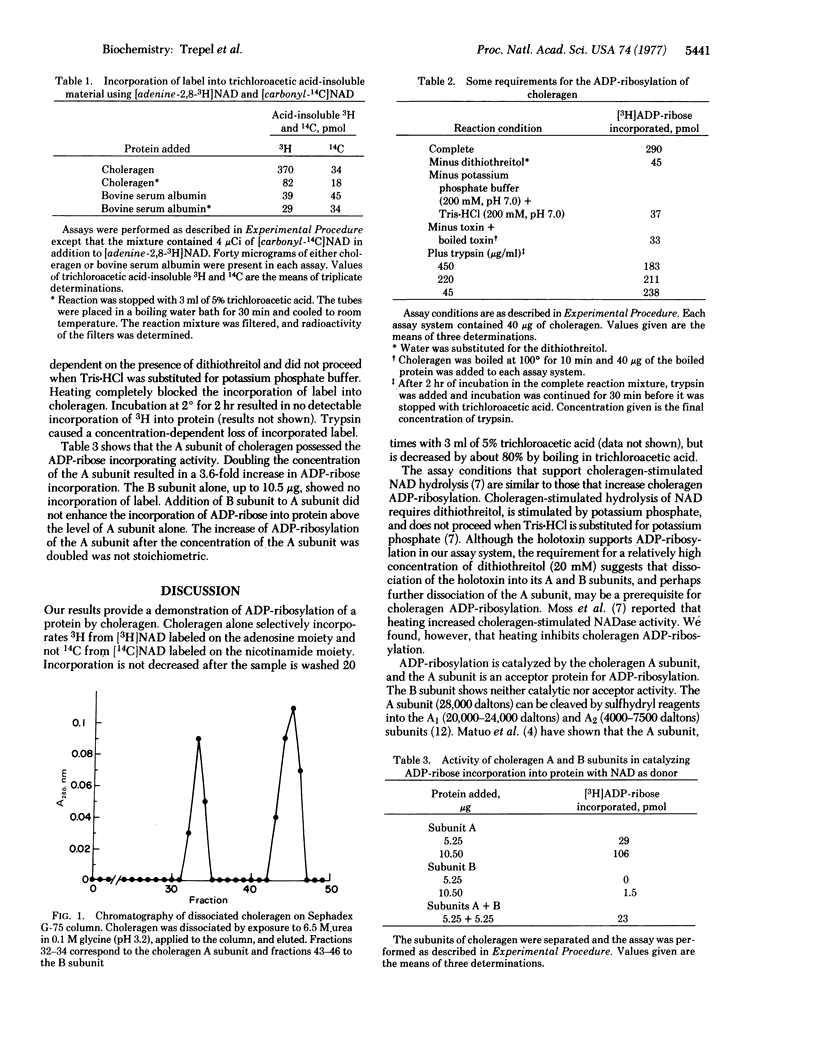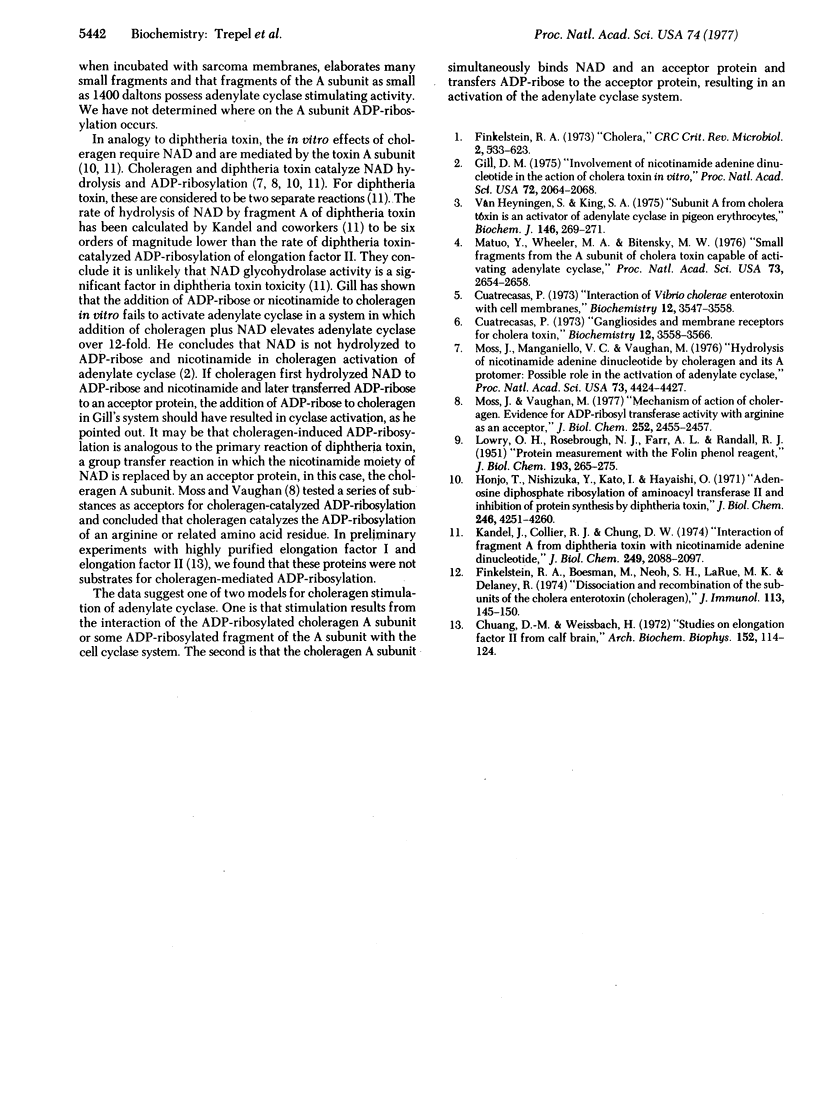Abstract
Choleragen selectively incorporates 3H from [3H]NAD labeled on the adenosine moiety and not 14C from [14C]NAD labeled on the nicotinamide moiety. This reaction does not require protein in addition to choleragen. Incorporation of isotope does not proceed at 4 degrees, requires dithiothreitol, is stable after extensive washing with cold trichloroacetic acid, and is decreased 80% by boiling in trichloroacetic acid. Studies with the A and B subunits of choleragen show that the A subunit catalyzes ADP-ribosylation and serves as an acceptor protein. The B subunit does not show catalytic or acceptor activity. We conclude that choleragen and its A subunit catalyze the hydrolysis of NAD and the enzymatic transfer of ADP-ribose to the A subunit.
Full text
PDF


Selected References
These references are in PubMed. This may not be the complete list of references from this article.
- Chuang D. M., Weissbach H. Studies on elongation factor II from calf brain. Arch Biochem Biophys. 1972 Sep;152(1):114–124. doi: 10.1016/0003-9861(72)90199-3. [DOI] [PubMed] [Google Scholar]
- Cuatrecasas P. Gangliosides and membrane receptors for cholera toxin. Biochemistry. 1973 Aug 28;12(18):3558–3566. doi: 10.1021/bi00742a032. [DOI] [PubMed] [Google Scholar]
- Cuatrecasas P. Interaction of Vibrio cholerae enterotoxin with cell membranes. Biochemistry. 1973 Aug 28;12(18):3547–3558. doi: 10.1021/bi00742a031. [DOI] [PubMed] [Google Scholar]
- Finkelstein R. A., Boesman M., Neoh S. H., LaRue M. K., Delaney R. Dissociation and recombination of the subunits of the cholera enterotoxin (choleragen). J Immunol. 1974 Jul;113(1):145–150. [PubMed] [Google Scholar]
- Gill D. M. Involvement of nicotinamide adenine dinucleotide in the action of cholera toxin in vitro. Proc Natl Acad Sci U S A. 1975 Jun;72(6):2064–2068. doi: 10.1073/pnas.72.6.2064. [DOI] [PMC free article] [PubMed] [Google Scholar]
- Honjo T., Nishizuka Y., Kato I., Hayaishi O. Adenosine diphosphate ribosylation of aminoacyl transferase II and inhibition of protein synthesis by diphtheria toxin. J Biol Chem. 1971 Jul 10;246(13):4251–4260. [PubMed] [Google Scholar]
- Kandel J., Collier R. J., Chung D. W. Interaction of fragment A from diphtheria toxin with nicotinamide adenine dinucleotide. J Biol Chem. 1974 Apr 10;249(7):2088–2097. [PubMed] [Google Scholar]
- LOWRY O. H., ROSEBROUGH N. J., FARR A. L., RANDALL R. J. Protein measurement with the Folin phenol reagent. J Biol Chem. 1951 Nov;193(1):265–275. [PubMed] [Google Scholar]
- Matuo Y., Wheeler M. A., Bitensky M. W. Small fragments from the A subunit of cholera toxin capable of activating adenylate cyclase. Proc Natl Acad Sci U S A. 1976 Aug;73(8):2654–2658. doi: 10.1073/pnas.73.8.2654. [DOI] [PMC free article] [PubMed] [Google Scholar]
- Moss J., Manganiello V. C., Vaughan M. Hydrolysis of nicotinamide adenine dinucleotide by choleragen and its A protomer: possible role in the activation of adenylate cyclase. Proc Natl Acad Sci U S A. 1976 Dec;73(12):4424–4427. doi: 10.1073/pnas.73.12.4424. [DOI] [PMC free article] [PubMed] [Google Scholar]
- Moss J., Vaughan M. Mechanism of action of choleragen. Evidence for ADP-ribosyltransferase activity with arginine as an acceptor. J Biol Chem. 1977 Apr 10;252(7):2455–2457. [PubMed] [Google Scholar]
- Van Heyningen S., King C. A. Short communications. Subunit A from cholera toxin is an activator of adenylate cyclase in pigeon erythrocytes. Biochem J. 1975 Jan;146(1):269–271. doi: 10.1042/bj1460269. [DOI] [PMC free article] [PubMed] [Google Scholar]


